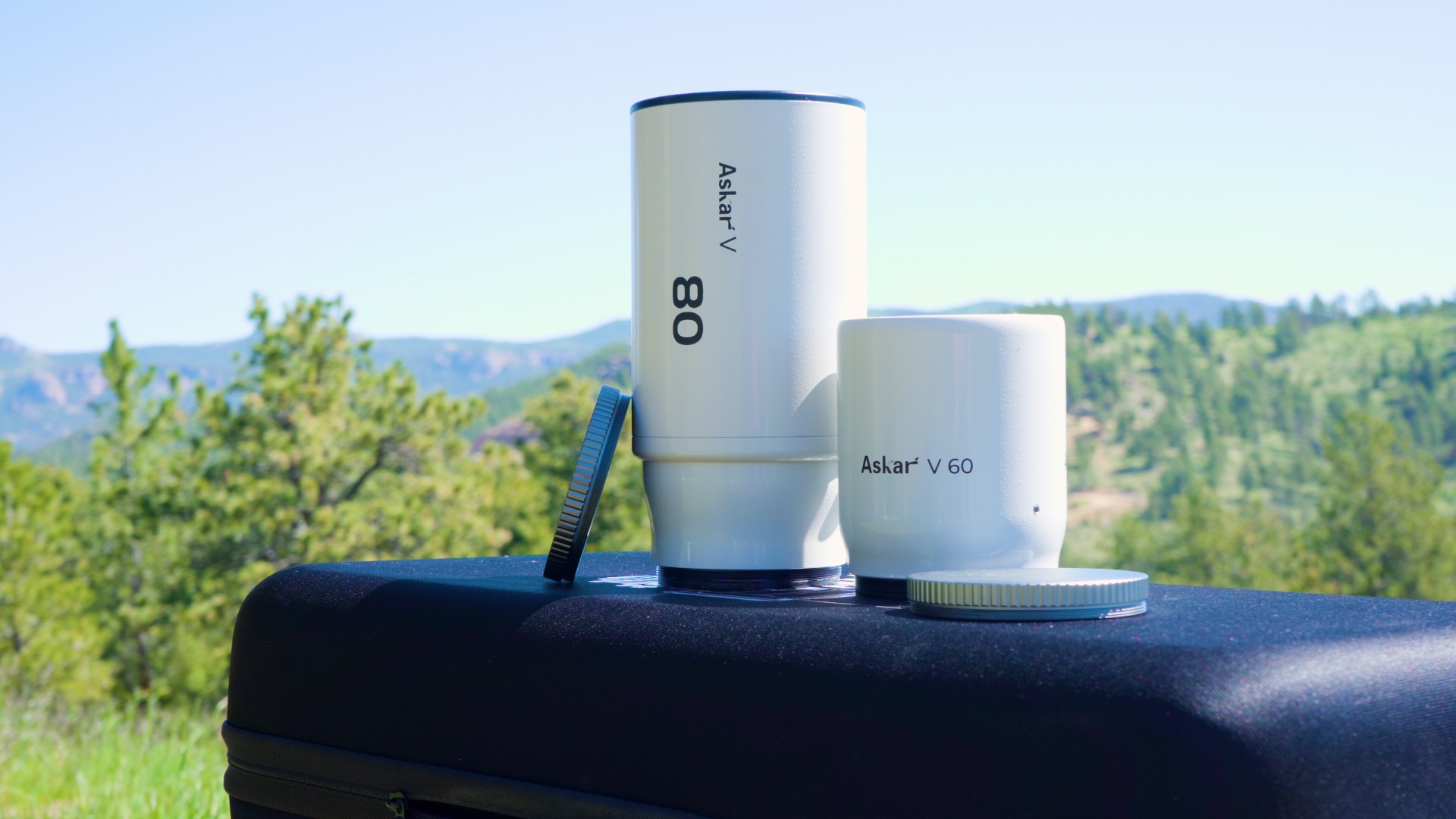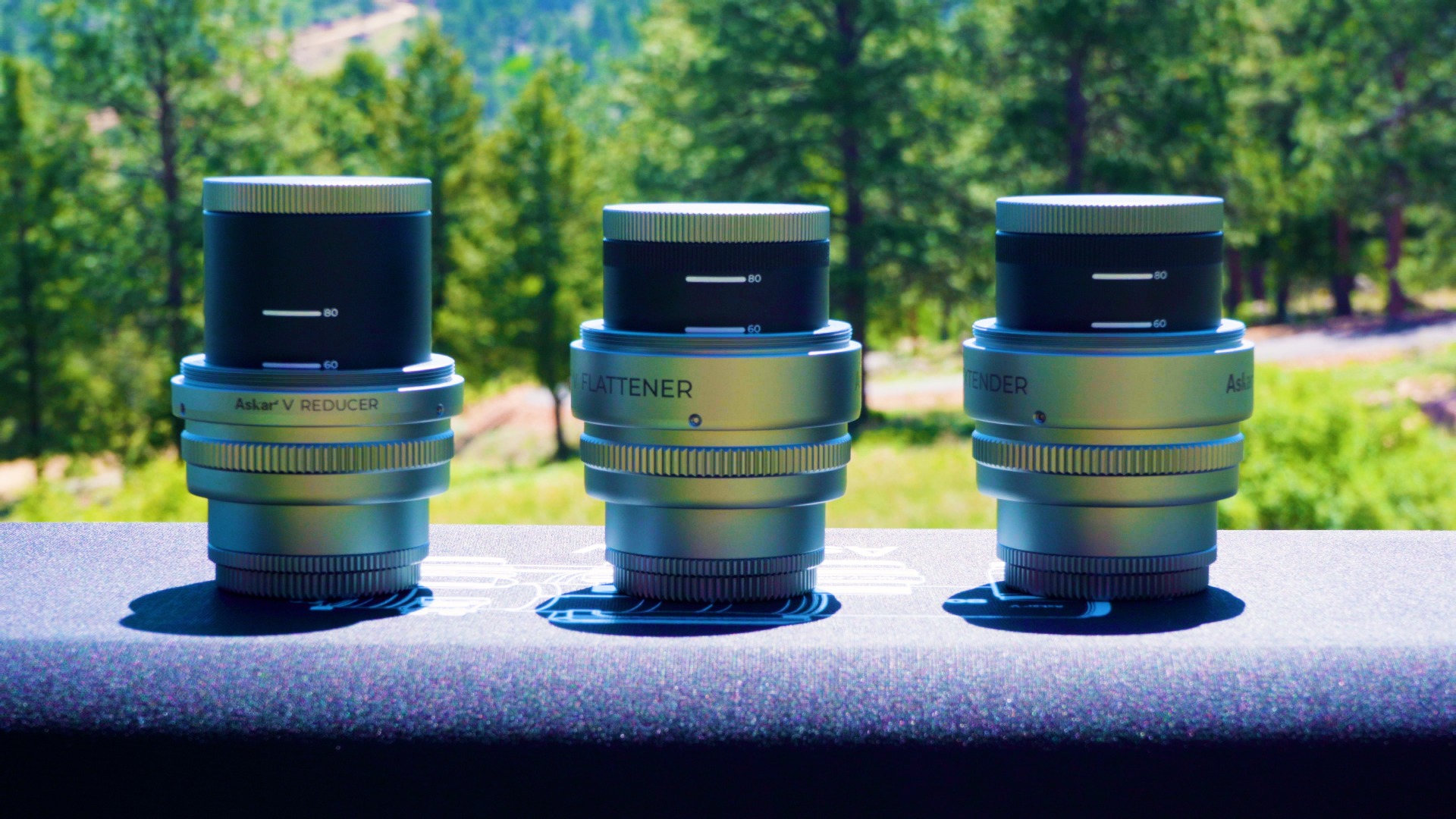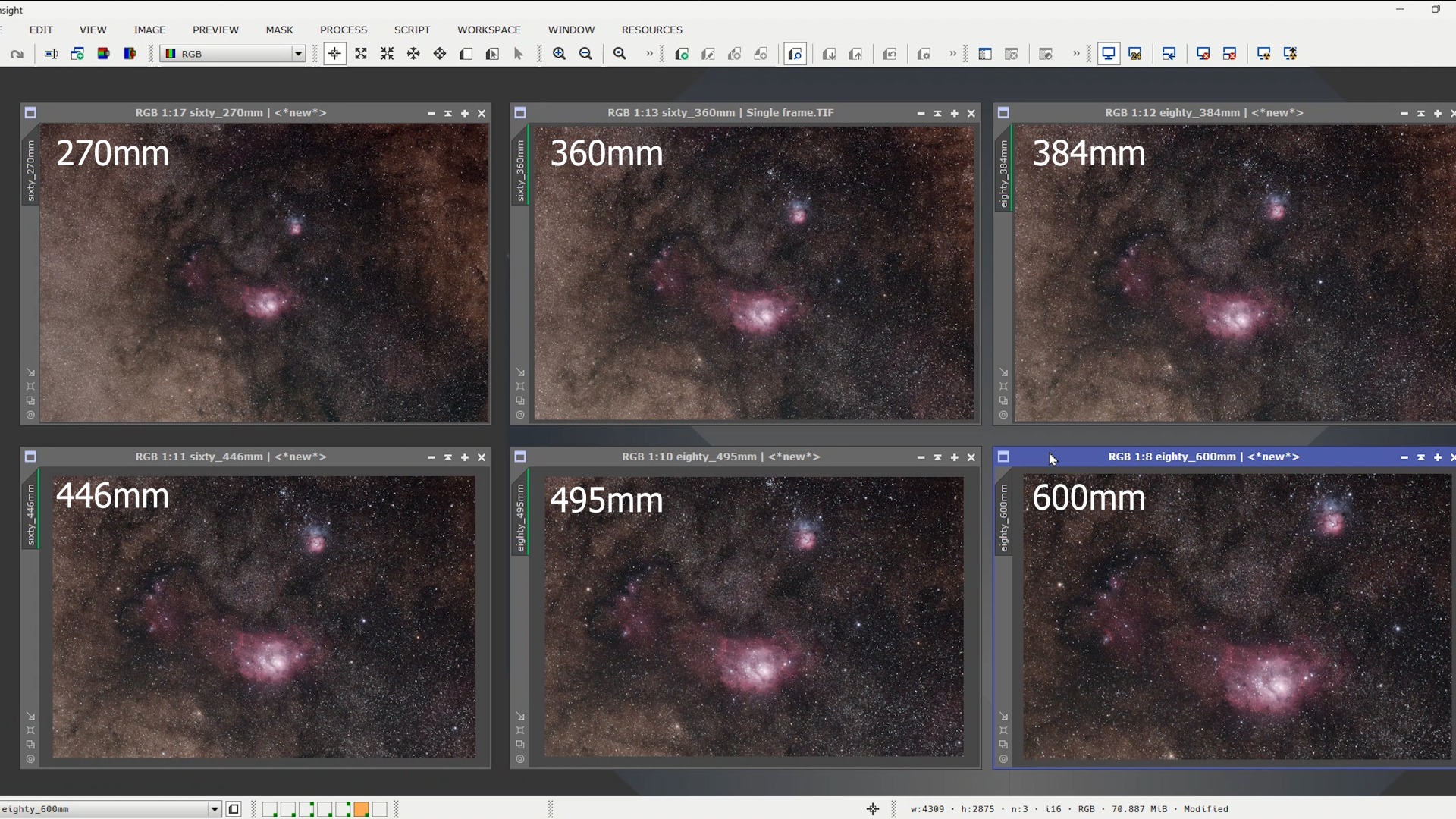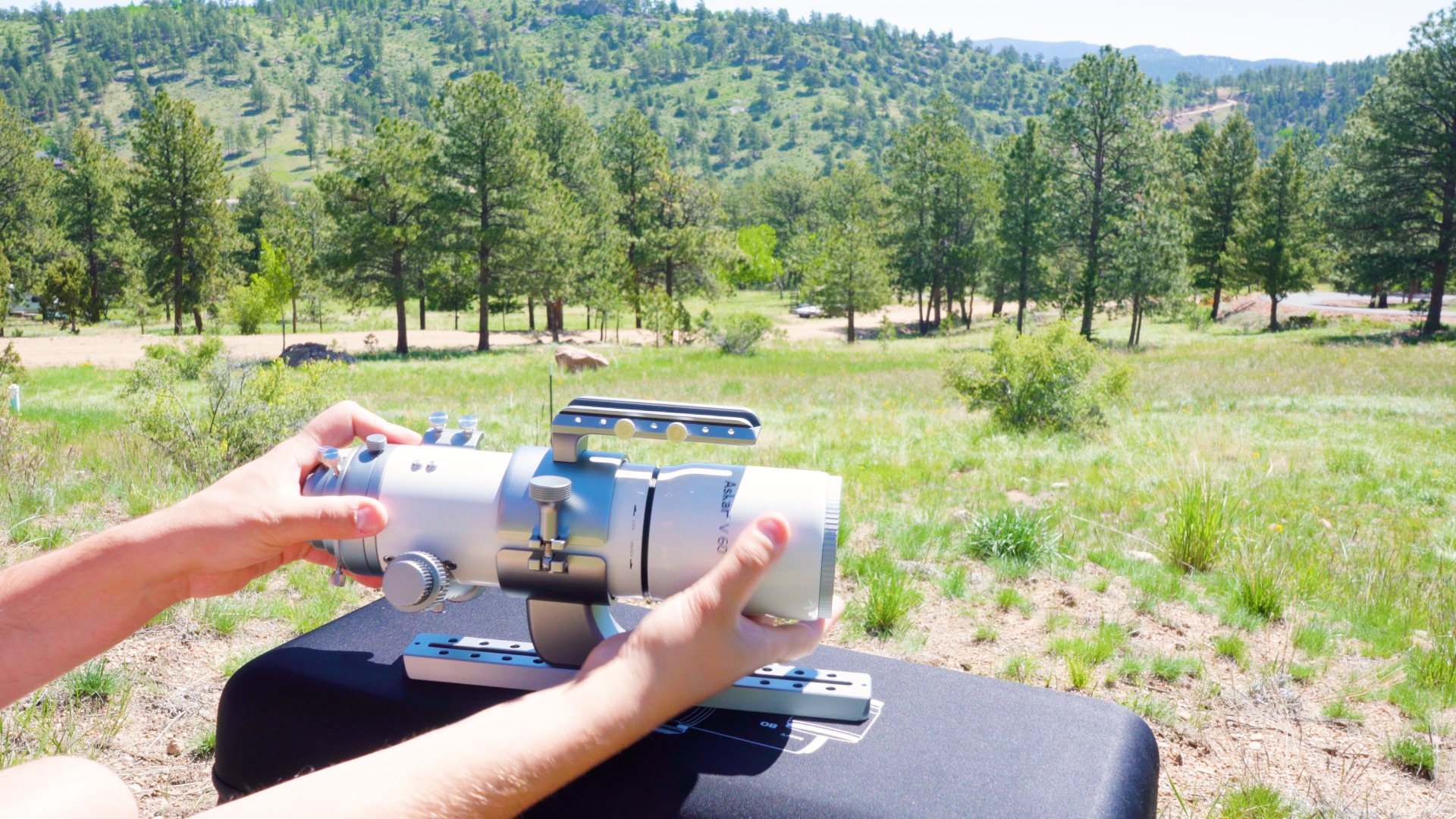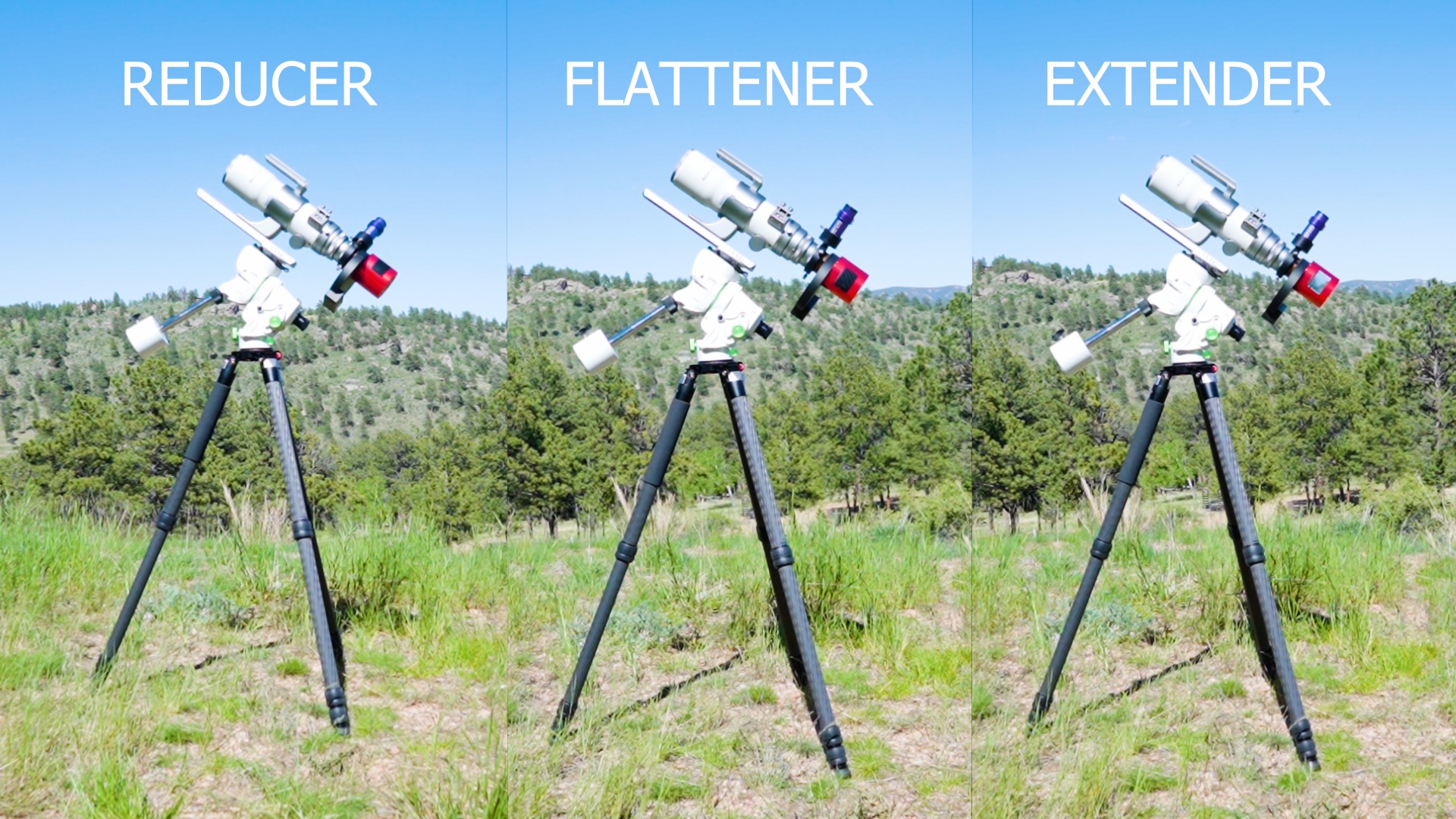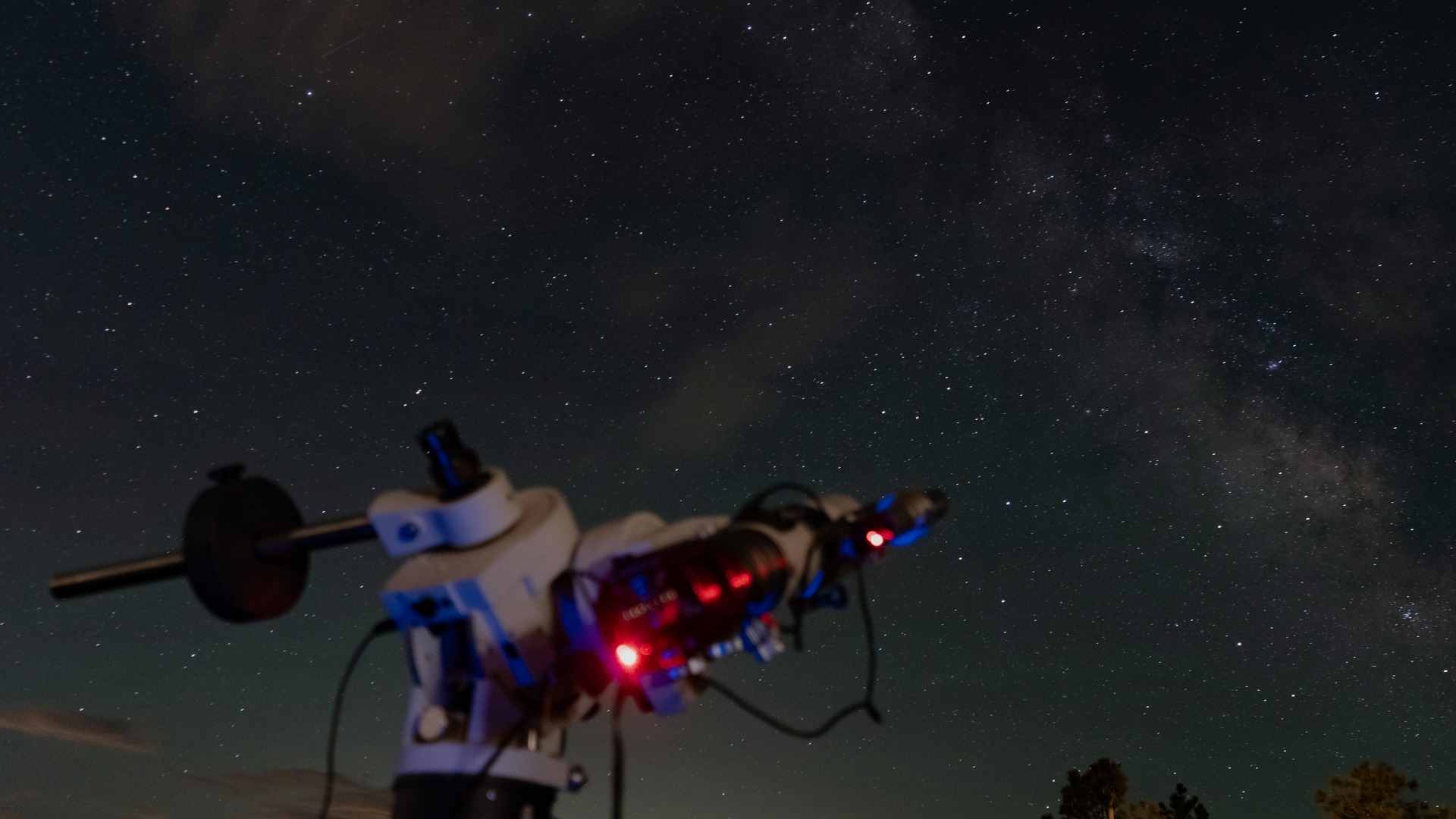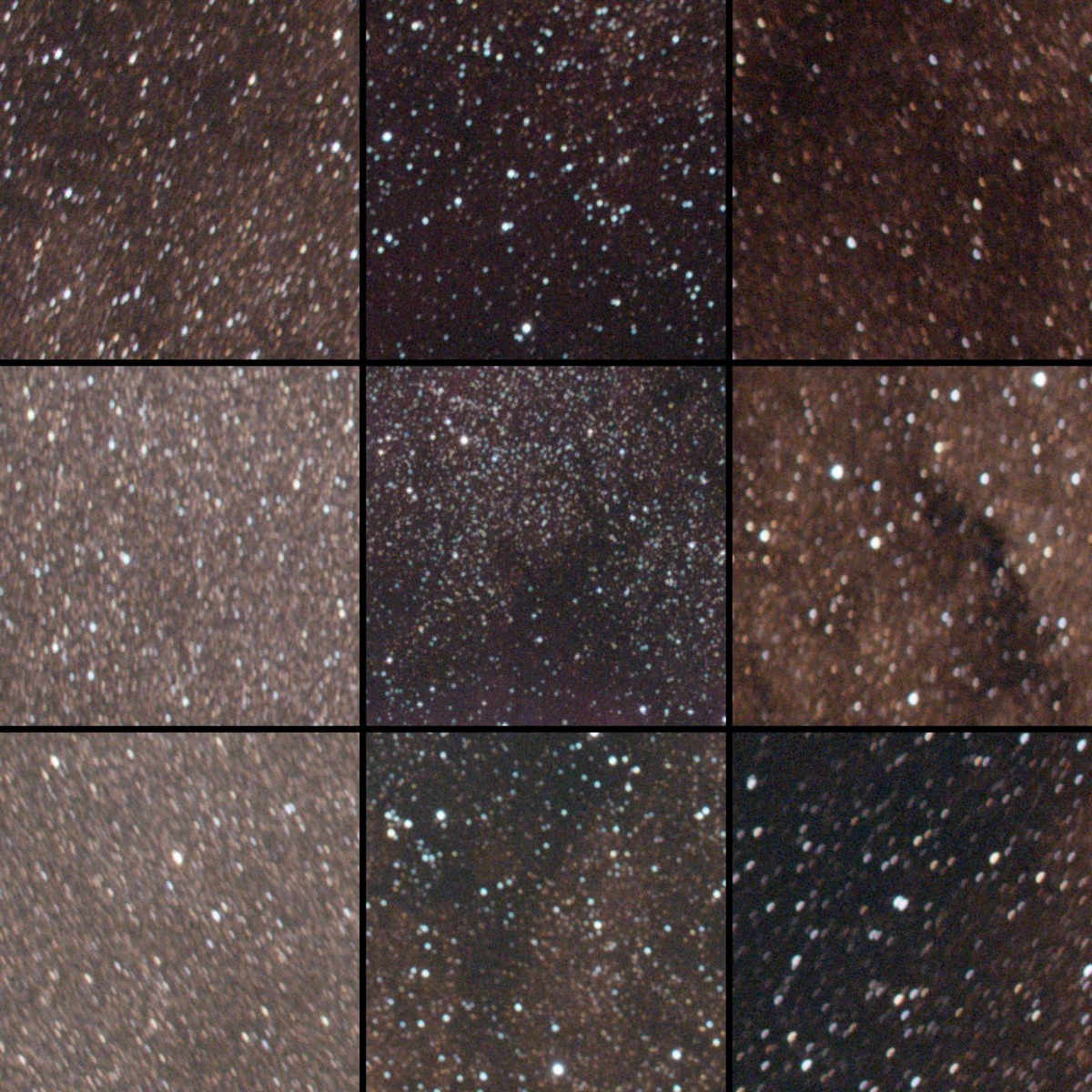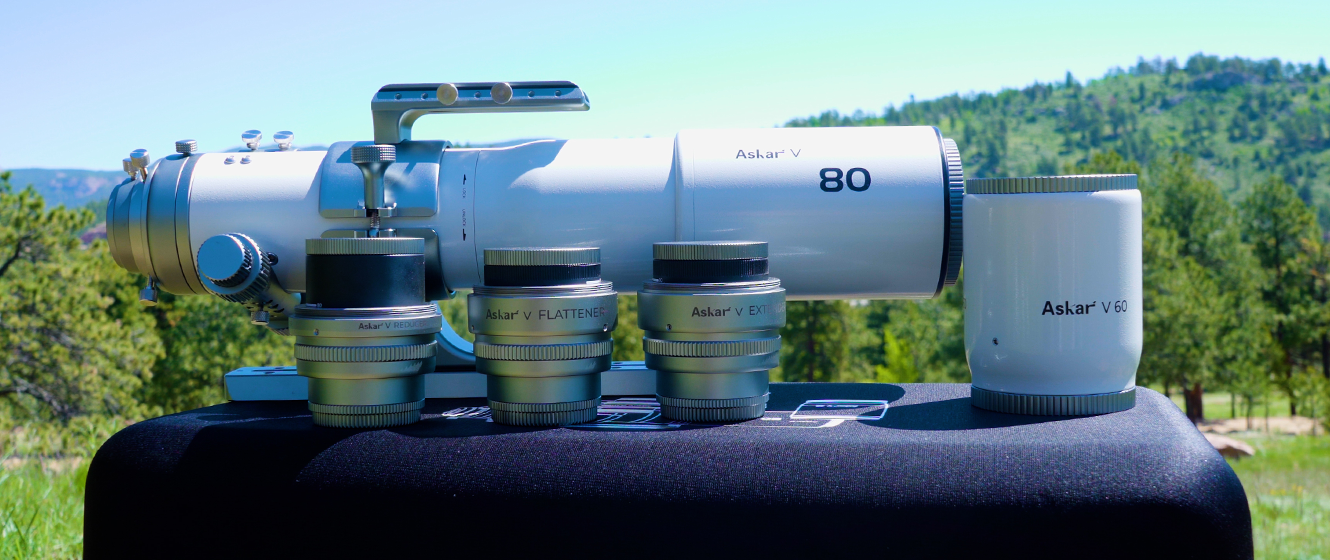
The Askar V Modular Refractor is Askar’s newest addition to their line of premium refractors. This refractor is special. It is an incredible and versatile option for those looking to shoot widefield astrophotos. In this article, we will discuss all the “need to know” features of the Askar Modular Refractor.
The standout feature of the Askar V Modular Refractor is its unique design that offers a wide range of optical configurations. This telescope comes with two objective lenses: a 60mm and an 80mm. This allows users to switch between different focal lengths, opening up a world of possibilities for capturing celestial objects with varying levels of detail and magnification. To expand the telescope's versatility even further, Askar has included a focal reducer, a field flattener, and a focal extender as additional components. These optical accessories enable users to modify the focal length and correct for distortions, ensuring crisp and clear images.
Thanks to the combination of the two objective lenses and the multiple optical components, the Askar V Modular Refractor offers a total of six different possible focal lengths. With the 60mm objective lens, users can achieve focal lengths of 270mm, 360mm, and 446mm. Switching to the 80mm objective lens opens up additional focal lengths of 384mm, 495mm, and 600mm. We will demonstrate these visually in “Teagan’s Journey to Photograph the Lagoon and Trifid Nebula”.
The build quality of the Askar V Modular Refractor is exceptional. The telescope is sturdily constructed, and the components are designed to be easily interchangeable and assembled.
The Askar V Modular Refractor corrects well for full-frame cameras and for those using APS-C size sensors, the correction is near perfect, providing stunning results without compromising on clarity or resolution. (More information on the quality of optics below in “Teagan’s Journey to Capture the Lagoon and Trifid”)
One question that we know beginner astrophotographers may ask is “Will this scope work with the Sky-Watcher GTi?” First, let's consider the scope with the 60mm objective attached. Given the scope's lower weight and wider focal ratio, this setup with the reducer, flattener, or focal extender should work well, making it an attractive option for astrophotographers looking for a portable and efficient rig.
While the 80mm objective lens with the focal reducer may also work with the Sky-Watcher GTi, it's worth noting that the 80mm objective lens with the field flattener and focal extender will likely not be suitable. The increased weight and longer focal length could strain the mount and compromise the overall performance. **This has yet to be tested by the HPS team but should we have this opportunity in the future, we will be sure to let the community know**
With the Askar V’s two objective lenses, multiple optical components, and compatibility with full-frame cameras, this telescope offers a wide range of focal lengths and exceptional image quality perfect for the amateur looking to shoot sweeping views of deep sky objects.
Teagan’s Journey to Capture the Lagoon and Trifid Nebula
Shooting sweeping photos of multiple nebulae, clusters, and other deep sky objects is done best (arguably in my opinion) with broadband filters. This requires dark skies. In the Colorado Rocky Mountains, I have access to Bortle 3 skies. I thought this would be a perfect opportunity to capture two nebulae that I have yet to image in my entire 7 years of doing astrophotography… Also a perfect test for the Askar V.
I wanted to simply test the quality of optics at the widest field of view and fastest focal ratio that the Askar system offers. The 60mm objective lens paired with the focal reducer got me to a short focal length of 270mm. I paired this with a full-frame camera to really put the optics to the test.
I know, through my experience with multiple types of refractors, reducers, flatteners, etc. that field flatteners tend to correct for full-frame cameras more precisely than a focal reducer. This is pretty standard for nearly all but the highest-end refactors and focal reducers on the market. I kept an open mind during this test.
Not only did I want to test the optics but I also wanted to present every combination of field of view possible with this modular scope. There are 6 different focal length combinations. We will discuss this shortly. But first, the optical quality. Below you can find a single 420s sub frame of the Lagoon and Trifid Nebula.
I was extremely impressed when this sub exposure popped up on my computer screen. This meant a promising next couple of hours! Here we can check out the quality of stars in the far corners and edges of the image. As mentioned, they are a tad oblong in the corners and far edges. Unfortunately, we were not able to test the optical quality of the focal extender and the field flattener with the full frame camera but I am nearly certain that they would produce near-perfect results given the higher f/6.18 - f/7.0 focal ratio. That being said, below you can find a crop of the stars on the corner and edges of the single sub frame above.
In the image above, the center, middle-top, and middle-bottom are nearly perfectly corrected by the focal reducer. The middle-right and middle-left are very acceptable, and the four corners are permissible. Any aberrations would be nearly eliminated with an APS-C sized sensor.
Different Possible Fields of View:
The Askar Offers the following focal length combinations:
- 60mm objective and reducer - 270mm
- 60mm objective and field flattener - 360mm
- 60mm objective and extender - 446mm
- 80mm objective and reducer - 384mm
- 80mm objective and field flattener- 495mm
- 80mm objective with extender - 600mm
To help you better visualize this: here are the different fields of view represented with a full-frame sensor:
 Click to Enlarge Image
Click to Enlarge Image
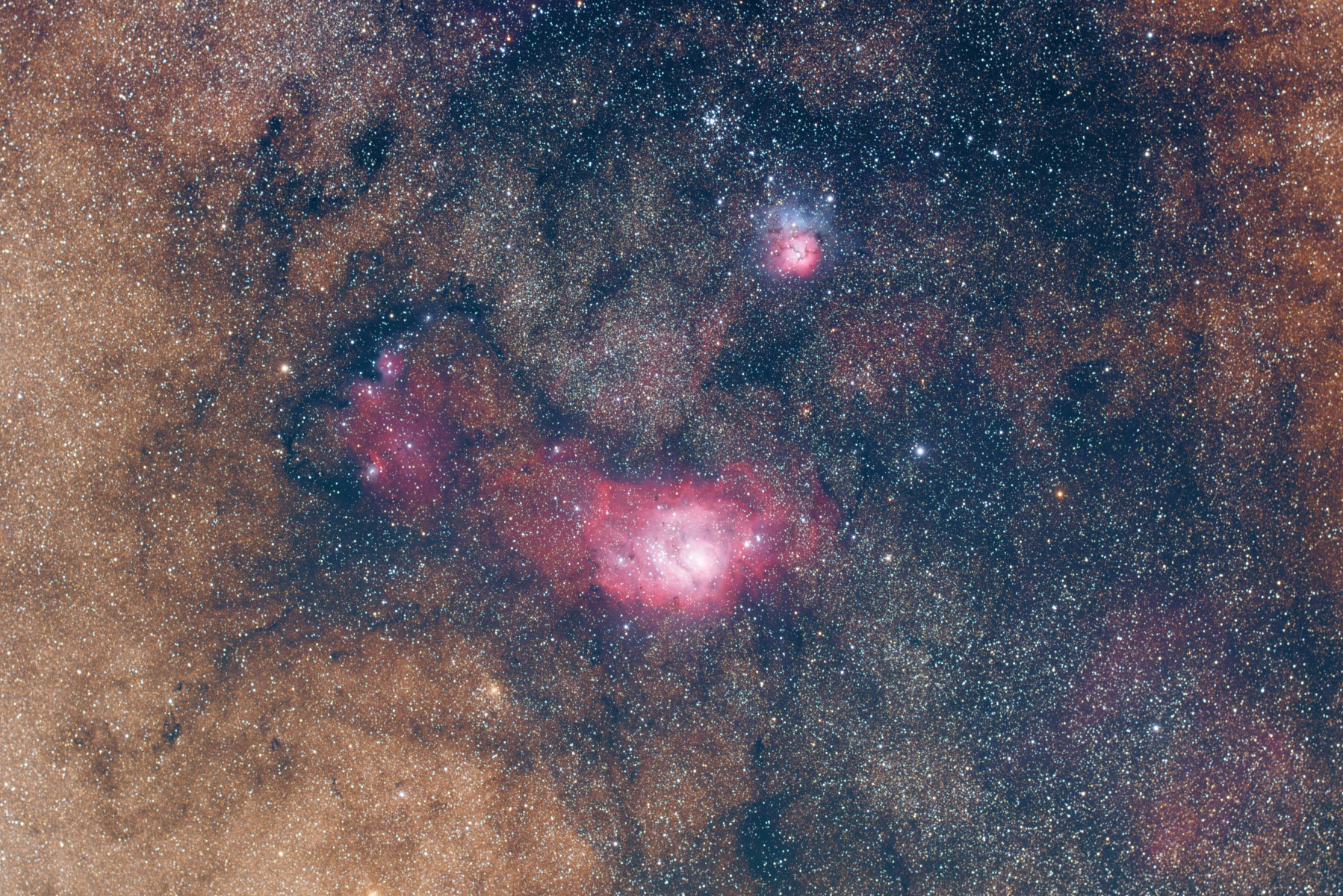 Click to Enlarge Image
Click to Enlarge Image
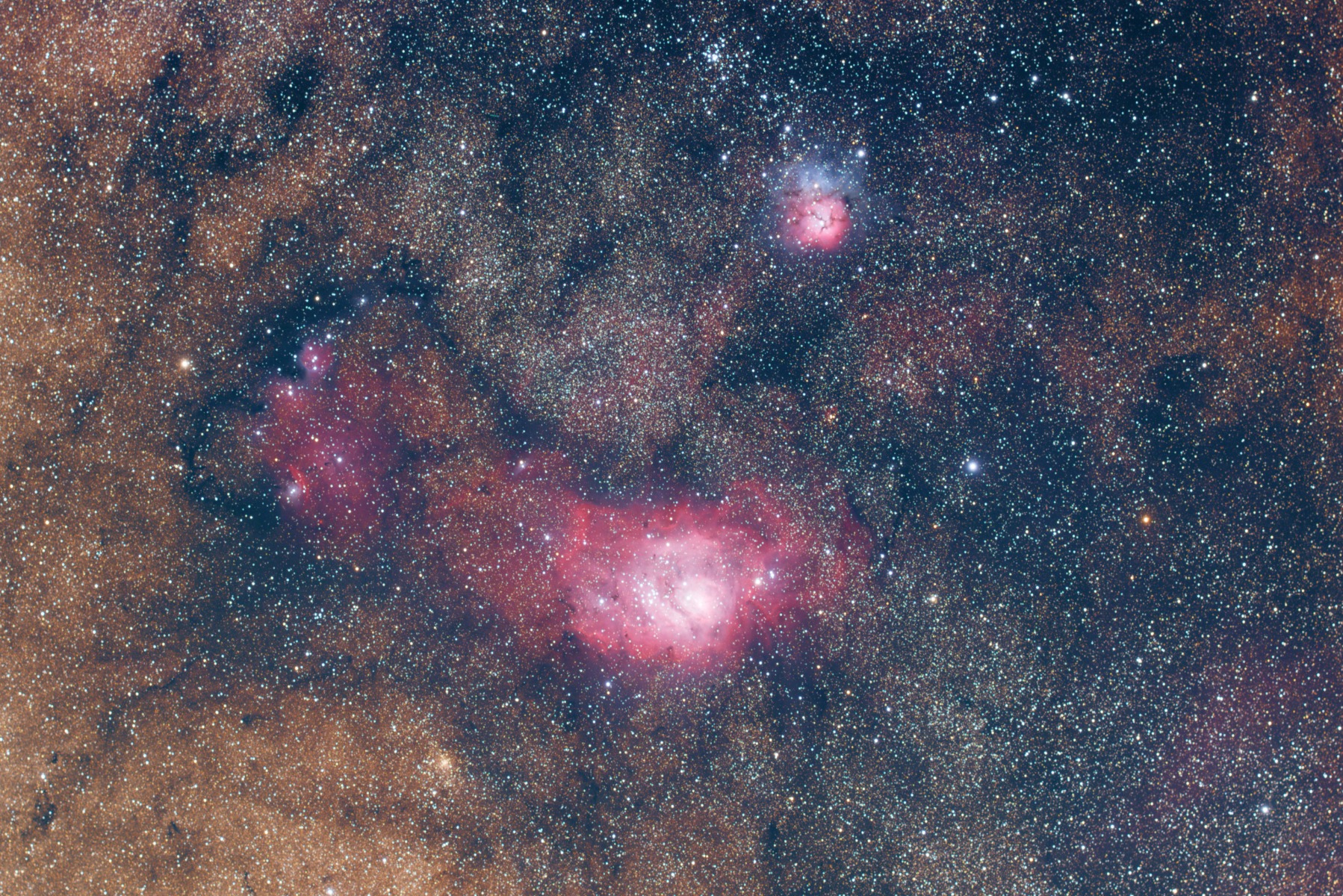 Click to Enlarge Image
Click to Enlarge Image
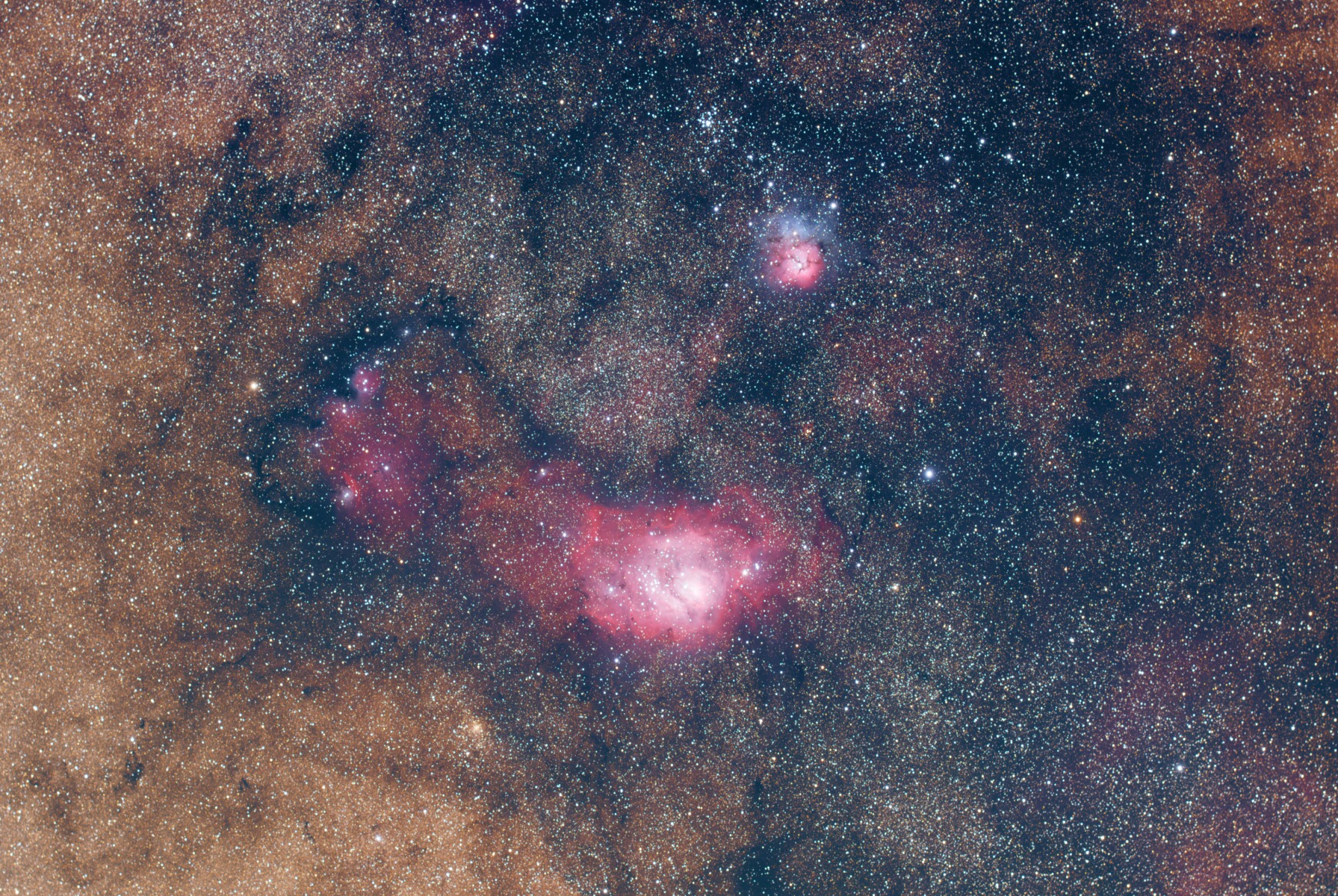 Click to Enlarge Image
Click to Enlarge Image
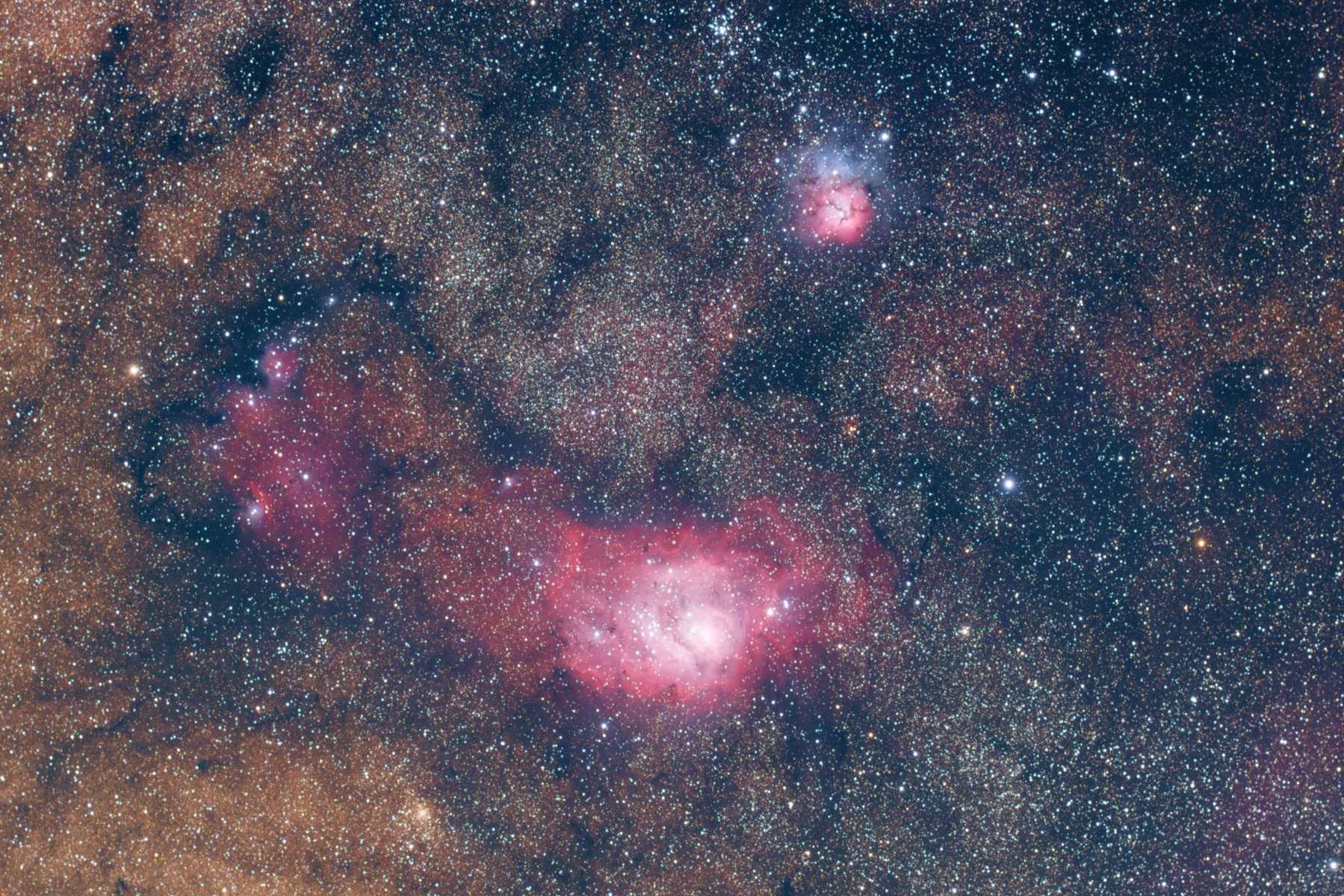 Click to Enlarge Image
Click to Enlarge Image
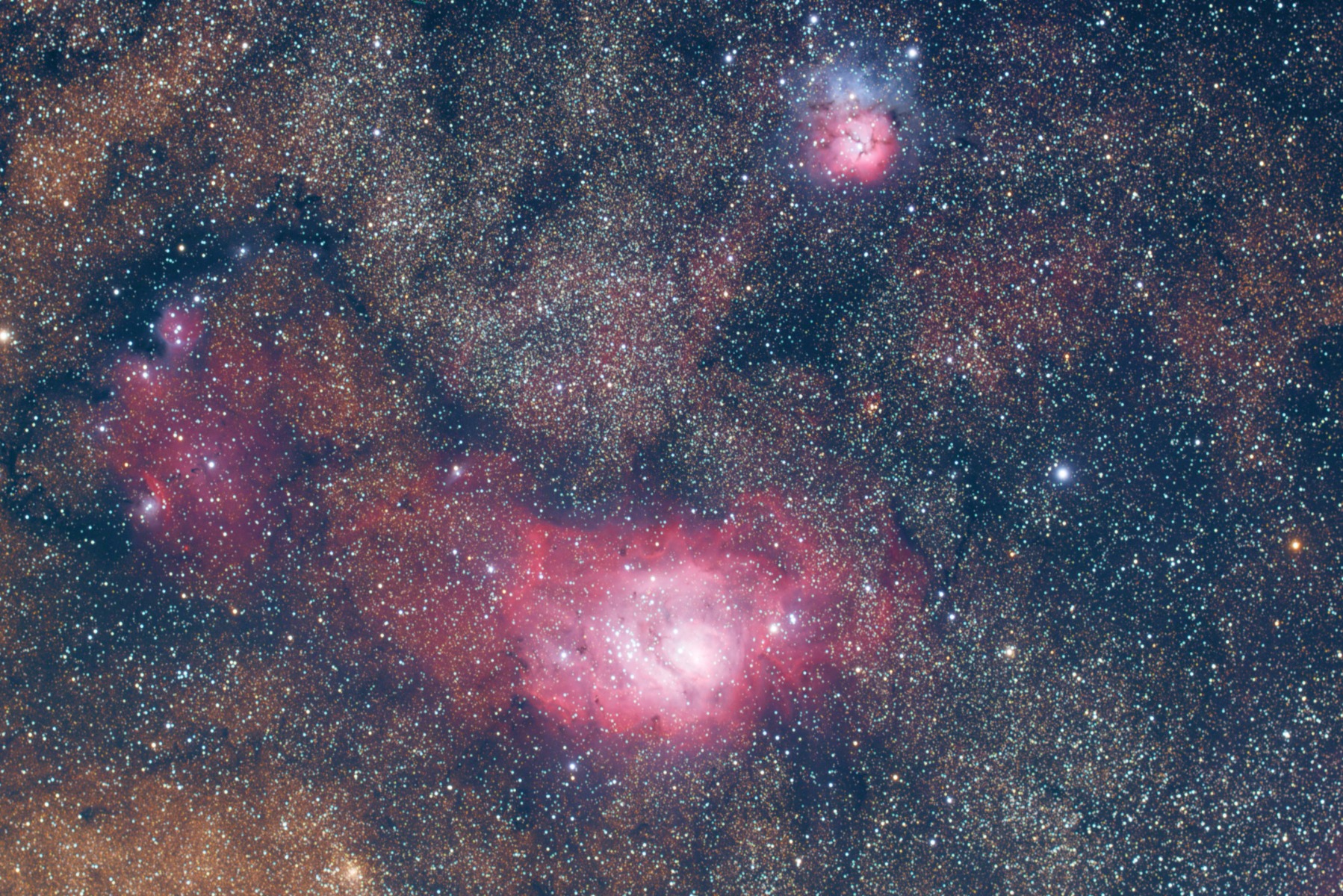 Click to Enlarge Image
Click to Enlarge Image
What I found was that the 60mm objective lens and field flattener was VERY close in focal length to the 80mm objective and focal reducer. Only 24mm apart. If you are looking for detail and light-gathering power we definitely recommend using the 80mm objective with the reducer. This offers you a significant boost in light-gathering power of the 60mm as well as a boost in resolution and speed. If you have a full-frame camera and are looking for the best quality to the edges of your field of view, then the 60mm with the field flattener would be the way to go.
The 60mm objective and extender match rather closely to the 80mm objective and field flattener. There is a 49mm focal length difference between the two pair which MAY BE enough to make a difference in framing but again, these are very close in focal length and for most targets, we would recommend using the 80mm objective and field flattener for the same reasons as above.
In conclusion, I had a great time using this scope and it will likely be one that I work with in the future. It is versatile and of great value - something that a beginner astrophotographer will thrive on.

Learn More
Interested in learning more about telescopes and astrophotography? Not sure where to begin? Check out our Astronomy Hub!





